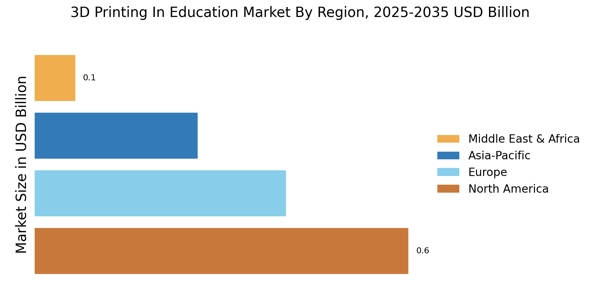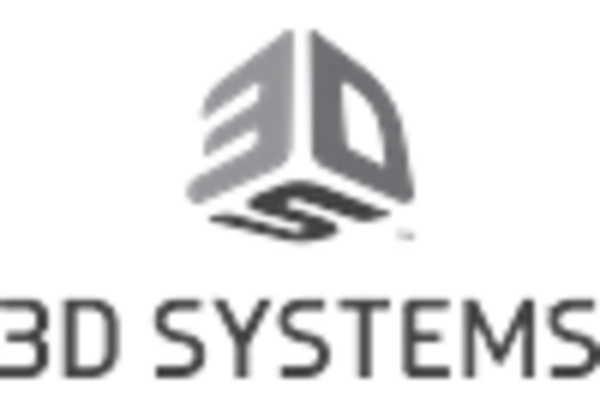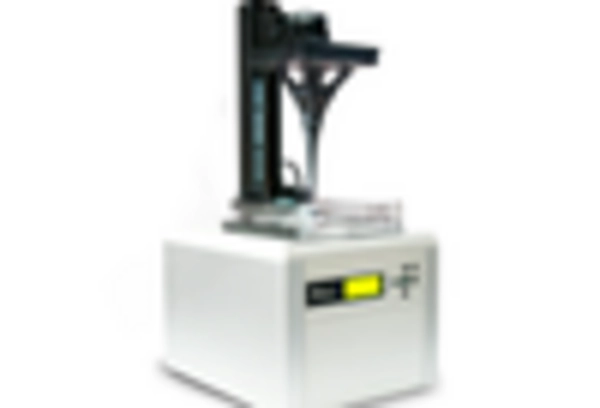Growing Emphasis on STEM Education
The growing emphasis on STEM (Science, Technology, Engineering, and Mathematics) education is significantly impacting the 3D Printing In Education Market. Governments and educational bodies are increasingly prioritizing STEM initiatives to equip students with essential skills for the future workforce. 3D printing serves as a powerful tool in this context, enabling students to visualize complex concepts and engage in hands-on projects that reinforce theoretical knowledge. Data indicates that institutions focusing on STEM education are more likely to adopt 3D printing technologies, with a reported increase of 40% in 3D printing usage among STEM-focused programs. This trend suggests a robust future for the market as educational institutions align their curricula with industry demands.
Advancements in 3D Printing Technology
Advancements in 3D printing technology are playing a pivotal role in shaping the 3D Printing In Education Market. Continuous innovations in materials, printing speed, and software capabilities are making 3D printing more accessible and user-friendly for educational settings. For instance, the introduction of low-cost, high-quality 3D printers has enabled even smaller institutions to implement this technology effectively. Furthermore, the development of educational software tailored for 3D printing allows students to design and print their projects with ease. As these technological advancements continue to evolve, they are likely to attract more educational institutions to adopt 3D printing, thereby expanding the market.
Integration of 3D Printing in Curriculum
The integration of 3D printing technology into educational curricula appears to be a driving force in the 3D Printing In Education Market. Educational institutions are increasingly recognizing the value of hands-on learning experiences that 3D printing provides. This technology allows students to engage in design thinking and problem-solving, fostering creativity and innovation. According to recent data, approximately 60% of educational institutions have incorporated 3D printing into their programs, indicating a strong trend towards experiential learning. As educators seek to prepare students for future careers in STEM fields, the demand for 3D printing resources and training is likely to grow, further propelling the market forward.
Cost-Effectiveness of 3D Printing Solutions
Cost-effectiveness is a crucial factor influencing the 3D Printing In Education Market. As educational budgets become increasingly constrained, institutions are seeking innovative solutions that provide value without excessive expenditure. 3D printing technology has demonstrated its potential to reduce costs associated with traditional manufacturing processes, particularly in prototyping and model creation. Reports suggest that schools utilizing 3D printing can save up to 30% on material costs compared to conventional methods. This financial advantage, combined with the ability to produce customized educational materials on-demand, positions 3D printing as an attractive option for schools aiming to maximize their resources while enhancing the learning experience.
Increased Collaboration with Industry Partners
Increased collaboration between educational institutions and industry partners is emerging as a significant driver in the 3D Printing In Education Market. Partnerships with businesses provide schools with access to cutting-edge technology, resources, and expertise that enhance the educational experience. These collaborations often result in the development of specialized programs that incorporate real-world applications of 3D printing, preparing students for careers in various fields. Data suggests that institutions engaged in partnerships with industry leaders report a 50% higher adoption rate of 3D printing technologies. This trend not only enriches the curriculum but also strengthens the connection between education and industry, fostering a skilled workforce ready to meet future challenges.


















Leave a Comment